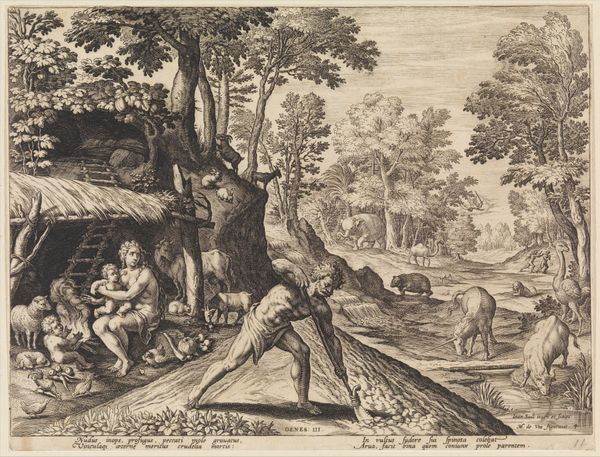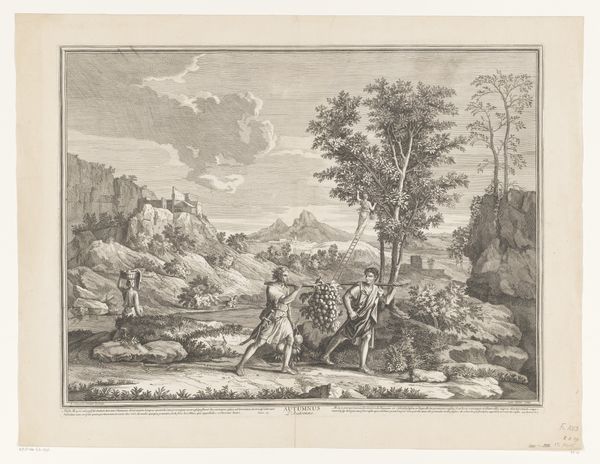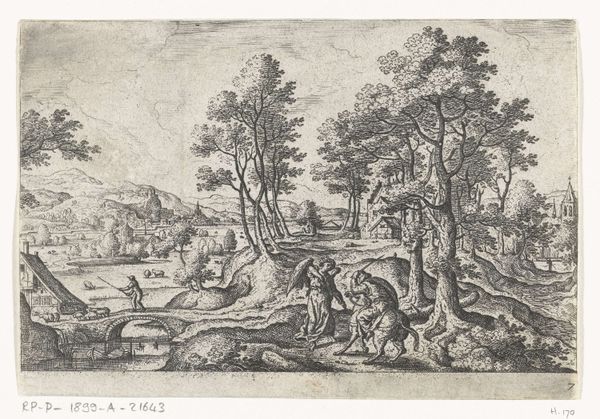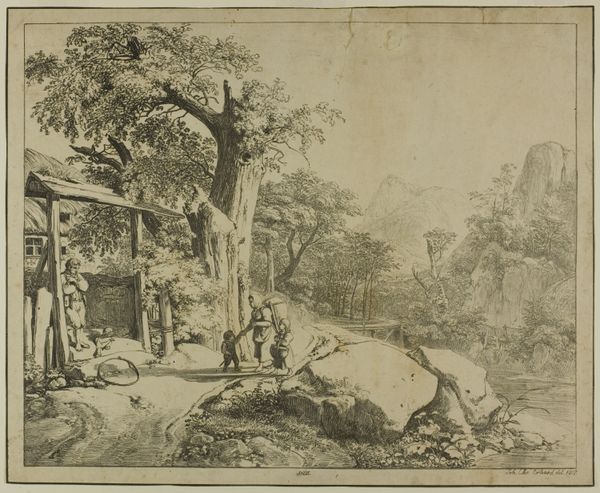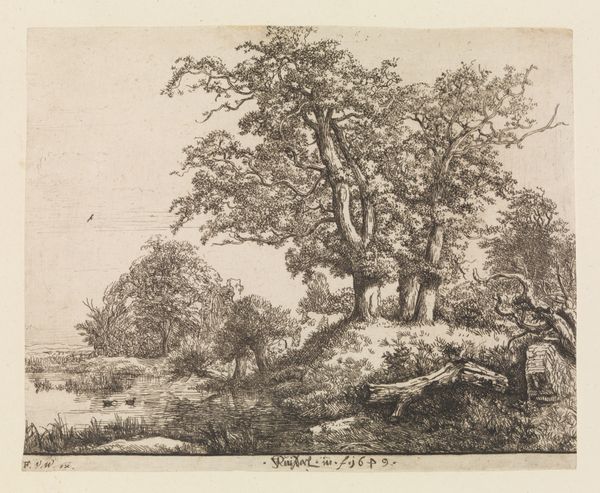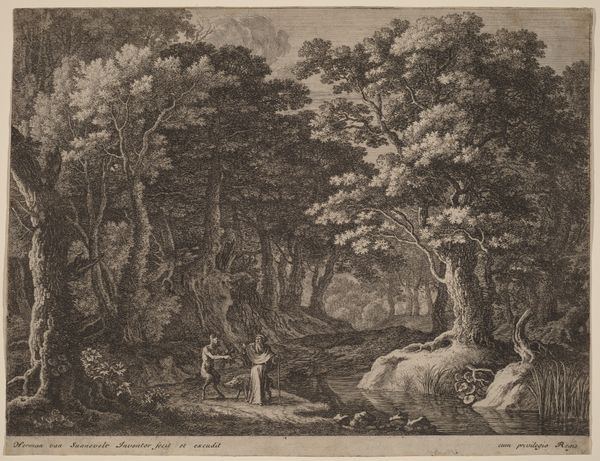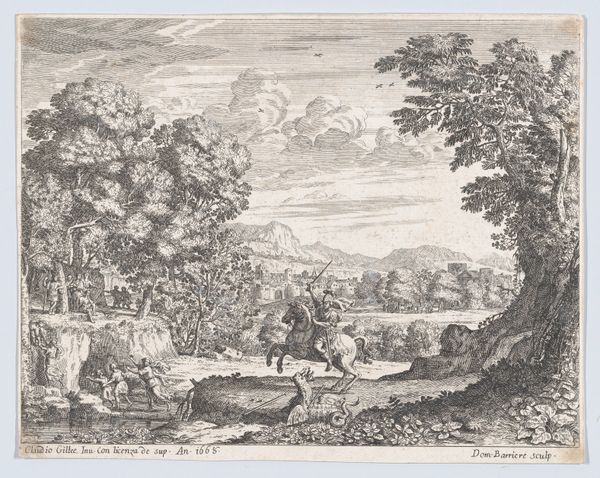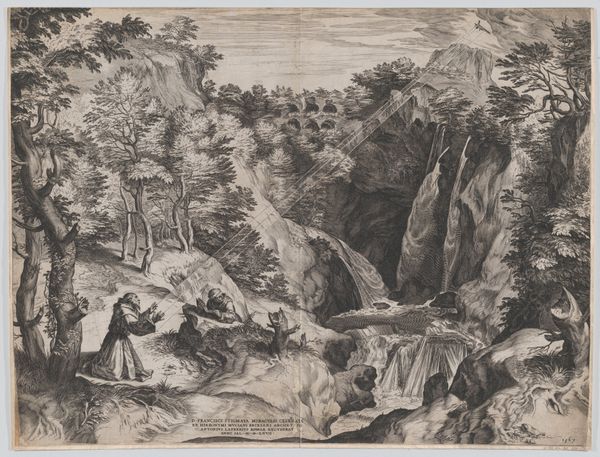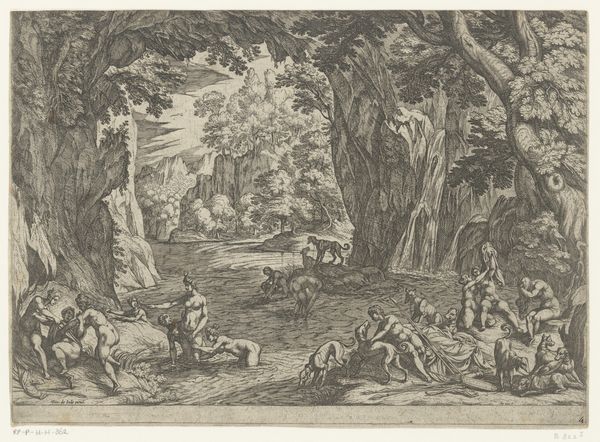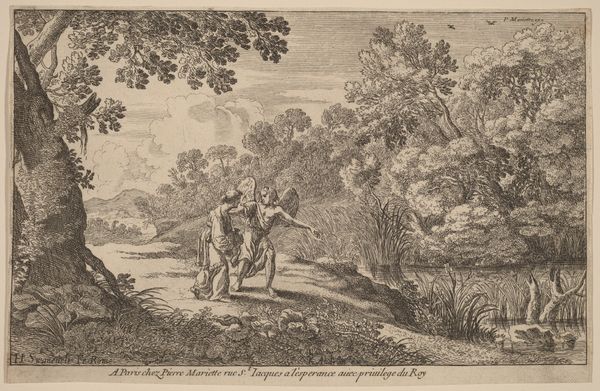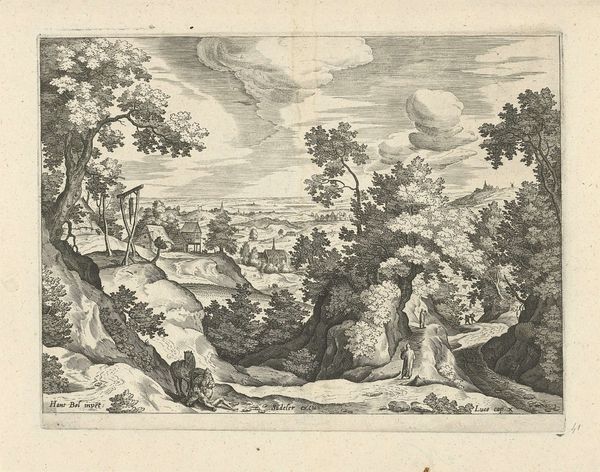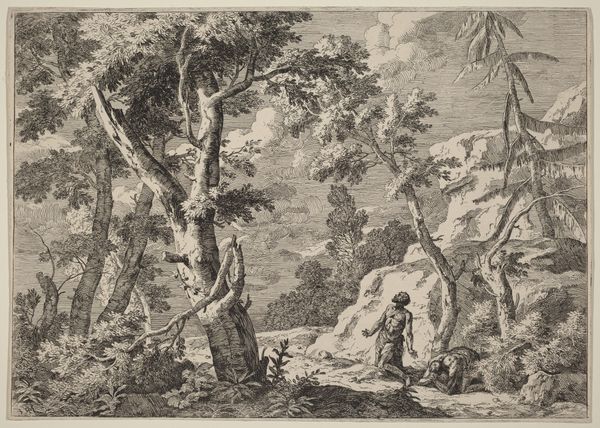
print, etching
#
ink drawing
#
narrative-art
#
baroque
# print
#
etching
#
landscape
#
figuration
Copyright: National Gallery of Art: CC0 1.0
Herman van Swanevelt created this print, Elijah in the Wilderness, in Rome. It depicts a scene from the Old Testament, but situates it within the conventions of 17th-century landscape art. The image invites us to consider the place of religion in the cultural life of its time. It was made in Italy, a Catholic country, but by a Dutch artist from a Protestant background. What did it mean for artists from different religious backgrounds to work alongside each other? How did institutions like the Catholic church shape the kind of images that artists were able to create? The print shows the prophet Elijah being fed by ravens in the wilderness. The landscape is idyllic, with trees, hills, and a cascading waterfall. In the background, deer graze peacefully, while in the foreground, an angel offers bread to the seated prophet. By studying such imagery and the records surrounding it, we can learn more about the complex history of religious pluralism in Europe.
Comments
No comments
Be the first to comment and join the conversation on the ultimate creative platform.
